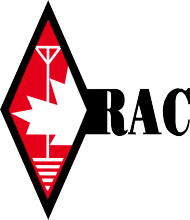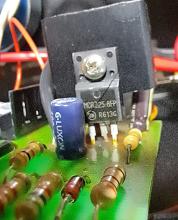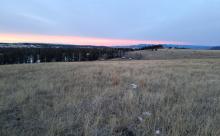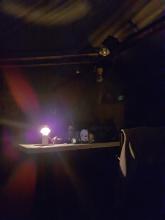Main menu
You are here
2024 BC QSO Party -- the results!
The 2024 BC QSO Party was held on February 3-4 and members of the Kamloops Amateur Radio Club participated from the Winter Field Day barn on the farm of Peter, VE7DNZ. We had a smaller turnout for the BC QSO Party, with Jim VE7HS (thanks to Faye for the awesome baked goodies!) and Myles VE7FSR setting up on Friday night and working the contest through to Sunday afternoon. Jim camped outside in his truck camper, and Myles slept in the barn on one of the cots. Ralph VA7VZA, Peter VE7DNZ, and Bob VA7BKN also helped in the contest.
We had two IC-7300 HF stations (thank you to Ralph VA7VZA and Jim VE7HS for the use of your radios) and a VHF station (used to talk people into the site). We ran everything from "alternative power" which was provided by a Honda EU2000i generator and a LiFePO4 100Ah battery. We had a little excitement on Saturday morning while getting the contest station ready -- when Myles was plugging loads in there was a very loud "pop!" from the Astron power supply and we could smell the magic smoke leaking out of something. Weirdly enough, the power supply kept working so we weren't sure what had happened!? After the contest Myles took the Astron apart and determined that the MCR225 IC that is part of the crowbar circuit had exploded, cracking the plastic case and blowing off one leg of the three-terminal TO-220 package! For HF antennas we used an 80M Carolina Windom (80-10M), a 20-15-10M EFHW vertical, and a 40/80M NVIS. We also cobbled together a 160M EFHW using poly electric fence wire that we installed as an "inverted L" using the 35-foot mast as the vertical element, and the rest went over to a tall tree. It was the first time we used a 160M antenna in a contest and we were able to log 9 contacts in the contest between 19:45 and 20:00 hours with stations in BC, Alberta and Oregon.Similar to when we operated during the Winter Field Day we had a big screen TV running HamClock (thanks, Elwood!) so we could get live MUF information to help us plan which bands would give us the best results.
Internet for the contest stations and HamClock was provided by Myles, VE7FSR using a cellular modem in his Jeep which created a WiFi hotspot for the contest site. Having internet enabled us to get live cluster information so we could monitor spots and see which bands were most active.








